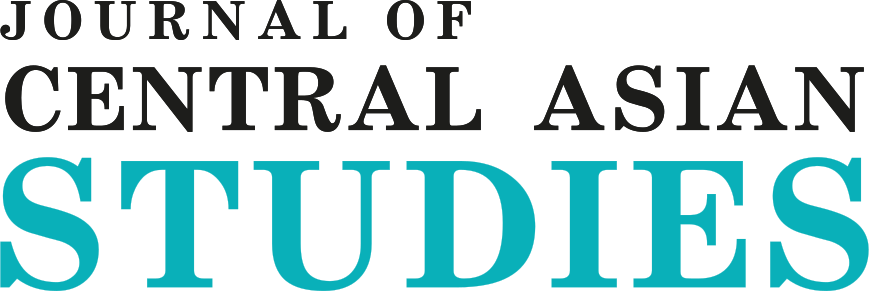U.S. Counterinsurgency Efforts Against The “Taliban” in Afghanistan: Political Analysis and Assessment
DOI:
https://doi.org/10.52536/2788-5909.2023-2.02Keywords:
counterinsurgency, counterterrorism, indigenous government, Taliban, the United States, AfghanistanAbstract
The U.S. fought its history’s longest war to defeat the “Taliban” insurgency, one strategy for doing so involved winning the “hearts and minds” of Afghans. However, the U.S it failed in its stated objectives. The United State could have done more to try to defeat the insurgency and counter terrorist groups in Afghanistan as well as to achieve state building and peace building objectives if they could have convinced the region, especially Pakistan to cooperate towards these aims Afghan problem. The poor governance, vast corruption, lack of regional cohesion in defeating “Taliban’s” insurgency especially Pakistan’s frequent negative interference in Afghanistan and lack of legitimacy of the Afghan Government has undermined the United States counterinsurgency efforts in past two decades in Afghanistan.
To elaborate on the failure of the U.S. counterinsurgency campaign, it is important to understand the essence of theory and practice. D.Galula’s theory of “counterinsurgency” is a mixture of military, political and social actions under the resilient control of a single authority. This observation leads us to one of the critical hypotheses of this research which is that by ignoring Indigenous government– as one the most significant precondition for winning counterinsurgency – resulted in the return of the “Taliban” insurgency and prolongation of the Afghan conflict. Using the interventionist theory, this paper briefly analyses the cause and consequences of the U.S. counterinsurgency efforts and its peace and state-building failure in Afghanistan.
References
Galula, D. (2005). Counterinsurgency Warfare: Theory and Practice. St. Petersburg: Hailer Publishing. 143 p.
Jones, S. G. (2008). Counterinsurgency in Afghanistan. Arlington: RAND Corporation. [Electronic resource]. URL: https://www.rand.org/ content/dam/rand/pubs/ monographs/2008/ RAND_MG595.sum.pdf
Paliwal, A. (2017). My Enemy's Enemy. Noida: HarperCollins Publishers.256p.
Enhancing Security and Stability in Afghanistan, June, 2020. [Electronic resource]. URL: https://media.defense.gov/2020/Jul/01/2002348001/-1/-1/1/ENHANCING_SECURITY_ AND_STABILITY_IN_AFGHANISTAN.PDF
Kilcullen, D. (2022, May 03). [Electronic resource] URL: https://fs.blog/counterinsurgency/
Fearon, J. D., & Laitin, D. D. (2003). Ethnicity, Insurgency, and Civil War. The American Political Science Review, Vol. 97, No. 1. (Feb., 2003), pp. 75-90.[Electronic resource].URL: https:// www.sneps.net/t/images/ Articles/03fearonlaitin.pdf
Trinquier, R. (1964). Modern Warfare: A French View of Counterinsurgency. Paris: Praeger Security International.131 p.
David J. Kilcullen (2010) Counterinsurgency. New York: Oxford University Press. 272 p.
Rineheart, J. (2010). Counterterrorism and Counterinsurgency. Vol. 4, No. 5 (November 2010), pp. 31-47/ [Electronic resource].URL: https:// www.jstor.org/stable/26298482
O'Brien, P. (2003, September). Forcedimgrationreview.org. [Electronic resource]. URL: https://www.fmreview.org/logistics/obrien
Rubin, B. R. (2013). Afghanistan from the Cold War through the War on Terror. Oxford: Oxford University Press.504 p.
Stapleton, B. J. (2007). A means to what end? why PRTS are peripheral to the bigger political challenges in Afghanistan. 1-49. Journal of Military and Strategic Studies, Fall 2007, Vol. 10, Issue 1.1-49 pp. [Electronic resource]. URL:https://ciaotest.cc.columbia.edu/ journals/ jomass/ v10i1/f_0027891_22726. pdf
Indurthy, R. (2011). The Obama administration’s strategy in Afghanistan. International Journal on World Peace, vol. 28, no. 3, Sept. 2011, pp. 7+. Gale Academic OneFile. [Electronic resource] URL: link.gale.com/apps/doc /A270043045/AONE?u=anon~fd1ad4e0&sid =googleScholar&xid=21519d53. Accessed 30 Jan. 2023.
Paul, C., Clarke, C. P., & Grill, B. (2010). Testing the Approaches to Counterinsurgency. In C. Paul, C. P. Clarke, & B. Grill, Sources of Success in Counterinsurgency (pp. 31-82). Washington: RAND Corporation. [Electronic resource].URL: https://www.rand.org/ pubs/monographs / MG964.html
Davidson, J. (2016). Principles of Modern American Counterinsurgency: Evolution and Debate. [Electronic resource].URL: https://www.brookings.edu/wp-content/uploads/2016/06/0608_ counterinsurgency_davidson.pdf
Hager, N., J. Stephenson. Hit and Run: The New Zealand SAS in Afghanistan and the Meaning of Honour. URL:https://doi.org/10.13169/statecrime.7.1.0148
Султан Акимбеков. История Афганистана. – Астана-Алматы: ИМЭП при фонде Первого президента, 2016. – 848 с.; Афганистан и «Талибан»: от модернизма к архаике, от сопротивления к признанию? / Kazakhstan Journal of Foreign Studies .- № 1–2 (3–4) . - 2022.- pp.6-22; «Афганистан стоит США очень дорого». [Electronic resourse].URL: https://eurasia.expert/afganistan-stoit-ssha-ochen-dorogo/ ?utm_source=google.com&utm_medium=organic&utm_campaign=google. com&utm_referrer=google.com
Rashid, A. (2008). Descent into Chaos. London: The Penguin Group. 484 p.
Rubin, B. R. (1995). The Fragmentation of Afghanistan. New York: Yale University Press.426 p.
Barfield, T. (2012). Afghanistan: A Cultural and Political History. Princeton: Princeton University Press.408 p.
Lalwani, Sameer, 'Pakistan’s Counterinsurgency Strategy', in Peter Bergen (ed.), Talibanistan: Negotiating the Borders Between Terror, Politics, and Religion (2013; online edn, Oxford Academic, 10 Feb. 2015), [Electronic resourse].URL: https://doi.org/10.1093/ acprof:osobl/9780199893072.003.0006, accessed 13 Mar. 2023.
Goodhead, J., & Hakimi, A. (2013, December 18). usip.org. [Electronic resource]. URL: https://www.usip.org
Fukuyama, F. (2004). State Building. London: Profile Books Ltd. 160 p.
Whitlock, C. (2021). The Afghanistan Papers. New York: Simon and Schuster. 384 p.
Suliman, A. (2021, August 20). Nearly 20 years of war, 10 days to fall: Afghanistan, by the numbers. [Electronic resource].URL: https://www.washingtonpost.com/world/2021/08/20/ afghanistan-war-key-numbers/
Gopal, A. (2014). No Good Men Among the Living. New York: Henry Holt and Company. 320 p.
Kitson, F. (1971). Low Intensity Operations: Subversion, Insurgency and Peacekeeping. London: Faber and Faber.220 p.
Eide, K. (2012). Power Struggle Over Afghanistan. New York: Skyhorse Publishing. (June 2020). Enhancing Security and Stability in Afghanistan. Washington: Department of Defense. [Electronic resource].URL: https://media.defense.gov/ 2020/Jul/01/2002348001/-1/-1/1/Enhancing_security_and_stability_in_Afhanistan.pdf
Landale, J. (2021, September 03). British Broadcasting. Corporation. [Electronic resource].URL: https://www.bbc.com/news/world-asia-58443839
Coll, S. (2018). Directorate S. New York: Penguin Press. 784 p.
Jalali, A. A. (2006). The Future of Afghanistan. Parameters, pp.4-19.
Downloads
Published
Issue
Section
License
Copyright (c) 2023 Zaland F.M., Rakhimbekova B.

This work is licensed under a Creative Commons Attribution 4.0 International License.










 Open content is licensed under the CC-BY
Open content is licensed under the CC-BY 